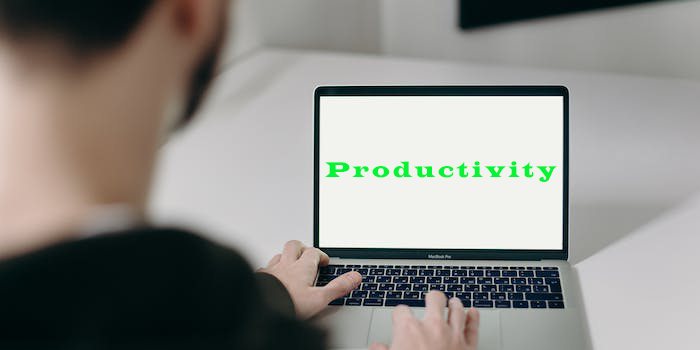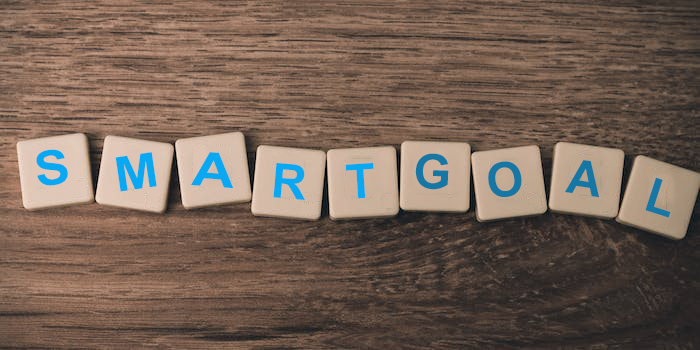Table of Contents
1. Productivity Tips

Set Clear Goals: Clearly define your goals and prioritize tasks to stay focused and productive. Break larger tasks into smaller, manageable steps to make them more achievable and less overwhelming.
Create a Structured Schedule: Establish a structured schedule that aligns with your most productive times of the day. Set specific work hours and designate time for breaks to maintain a healthy work-life balance.
Eliminate Distractions: Minimize distractions by turning off notifications on your devices, closing unnecessary tabs or applications, and creating a dedicated workspace free from interruptions.
Prioritize and Delegate: Identify tasks that require immediate attention and prioritize them accordingly. Delegate tasks that can be handled by others, freeing up time for more important responsibilities.
Time Blocking: Use time blocking techniques to allocate specific time slots for different tasks or types of work. This helps eliminate multitasking and ensures focused attention on one task at a time.
Take Regular Breaks: Frequent breaks can actually boost productivity and focus. Try the Pomodoro Technique, where you work in 25-minute intervals, followed by a short break. Repeat this cycle four times, then take a longer break.
Practice Effective Communication: Clearly communicate with colleagues or clients to prevent miscommunication and unnecessary back-and-forth. Use collaboration tools like project management platforms or video conferencing to streamline communication.
Set Realistic Deadlines: Be realistic when setting deadlines for yourself or when committing to deadlines given by others. Avoid overcommitting and allow buffer time for unexpected issues or delays.
Manage Energy and Focus: Pay attention to your energy levels and work on tasks that require high focus during your peak productive times. Align your tasks with your energy levels to maximize efficiency.
Take Care of Yourself: Ensure you get enough sleep, eat well, exercise regularly, and practice self-care. Physical and mental health are crucial for maintaining productivity and focus.
2. Increase Productivity
Improved Focus: Taking regular breaks, engaging in leisure activities, and spending time on personal interests can help individuals recharge mentally. This allows for improved focus and concentration when they return to work, leading to higher productivity and efficiency.
Reduced Burnout: Continuous work without adequate rest can lead to burn, which can significantly hinder productivity. By prioritizing work-life balance, individuals can prevent burnout and maintain their energy levels, resulting in sustained productivity over the long term.
Stress Reduction: A balanced work-life routine helps reduce stress levels. High levels of stress can negatively impact cognitive function, decision-making abilities, and overall performance. When individuals have time for self-care and relaxation, they can better manage stress and be more productive in their work.
Increased Creativity: Engaging in activities outside of work, such as hobbies, exercise, or spending time with loved ones, can stimulate creativity. Creative thinking is valuable in problem-solving and generating innovative ideas, which can lead to increased productivity in the workplace.
Enhanced Time Management: Striving for work-life balance encourages individuals to prioritize tasks effectively and make efficient use of their time. By creating boundaries between work and personal life, individuals can better allocate time to complete work-related tasks and ultimately enhance productivity.
Greater Job Satisfaction: Research has shown a strong link between work-life balance and job satisfaction. When individuals feel fulfilled in their personal lives, they are more likely to be engaged and motivated in their work. Increased job satisfaction can lead to higher levels of productivity and commitment to achieving tasks and goals.
Improved Overall Well-being: When individuals prioritize their well-being and have a healthy work-life balance, they generally experience higher levels of happiness and contentment. Positive emotions and overall well-being are closely tied to motivation and productivity.
3. Time Management Strategies


Prioritize Tasks: Determine which tasks are most important and urgent. Use techniques like the Eisenhower Matrix, where tasks are categorized into four quadrants based on their importance and urgency. Focus on completing tasks in the “Important and Urgent” quadrant first.
Set SMART Goals: Ensure your goals are Specific, Measurable Achievable, Relevant and Time-bound. Break down larger goals into smaller, actionable steps to make them more manageable and easier to track progress.
Use To-Do Lists: Create a to-do list at the beginning of each day or week. Prioritize tasks and cross them off as you complete them. This helps provide a visual representation of your progress and keeps you focused.
Time Blocking: Allocate specific time blocks for different tasks or activities. Dedicate uninterrupted periods of time for focused work, meetings, breaks, and personal activities. Stick to the allocated time slots to enhance productivity and discipline.
Single-tasking: Avoid multitasking, as it can reduce productivity and increase errors. Instead, focus on completing one task at a time before moving on to the next. This allows for better concentration and attention to detail.
Use Productivity Tools: Utilize productivity tools such as task management apps, project management software, and time tracking tools. These tools can help streamline workflows, enhance collaboration, and provide insights into how time is spent.
Delegate and Outsource: Identify tasks that can be delegated or outsourced to others. Effective delegation frees up time for more high-priority tasks and allows you to focus on activities that require your expertise.
Avoid Procrastination: Procrastination can lead to unnecessary stress and decreased productivity. Identify why you’re procrastinating and use strategies like breaking tasks into smaller steps, setting deadlines, or using the Pomodoro Technique to overcome procrastination.
Practice Time Blocking: Allocate specific time blocks for different tasks or activities. Dedicate uninterrupted periods of time for focused work, meetings, breaks, and personal activities. Stick to the allocated time slots to enhance productivity and discipline.
Take Breaks and Rest: Incorporate regular breaks into your schedule to recharge and prevent burnout. Studies show that taking short breaks during intensive work sessions can improve focus and productivity.
4. Efficient Work Habits
Prioritize Tasks: Start each day by identifying the most important tasks that need to be completed. Prioritize them based on urgency and importance to ensure that essential work gets done first.
Create a To-Do List: Make a to-do list or use a task management tool to keep track of your responsibilities and deadlines. Break down larger tasks into smaller, manageable sub-tasks, and check them off as you complete them.
Avoid Procrastination: Procrastination can significantly hinder productivity. Combat it by breaking tasks into smaller steps, setting specific deadlines for each step, and using techniques like the Pomodoro Technique (working in focused intervals) to maintain motivation and focus.
Use Time Management Techniques: Implement time management techniques like time blocking or the Eisenhower Matrix to allocate specific time slots for different tasks and prioritize them effectively.
Minimize Distractions: Identify and minimize distractions that can disrupt your workflow. Turn off notifications on devices, close unnecessary tabs or applications, and create a dedicated workspace that is free from interruptions.
Practice Single-Tasking: Multitasking can often lead to decreased efficiency and errors. Instead, focus on one task at a time to give it your full attention and complete it with higher quality and accuracy.
Delegate and Collaborate: Don’t hesitate to delegate tasks that can be handled by others, freeing up time for more important responsibilities. Collaboration and effective communication also help streamline work processes and prevent unnecessary duplication of efforts.
Streamline Workflow: Look for ways to streamline your workflow and eliminate unnecessary steps or inefficiencies. Automate repetitive tasks, use productivity tools or software, and establish standardized processes to optimize your work routine.
Take Regular Breaks: Taking short breaks throughout the day can actually improve productivity. Use these breaks to stretch, move around, and recharge mentally. Even a short walk or mindfulness exercise can help clear your mind and boost focus when you return to work.
Reflect and Learn: Regularly reflect on your work habits and productivity levels. Assess what is working well and what could be improved. Continuously seek opportunities to refine your productivity practices and learn new techniques or strategies.
5. Goal Setting Techniques


SMART Goals: The SMART framework is a widely used technique for setting effective goals. SMART stands for Specific, Measurable, Achievable, Relevant, and Time-bound. When setting a goal, ensure it is specific and well-defined, measurable so that progress can be tracked, achievable with the resources available, relevant to your overall objectives, and time-bound with a specific deadline for completion.
OKRs (Objectives and Key Results): OKRs are a goal-setting framework used by many companies and individuals. It involves setting ambitious objectives and defining key results that will signify achievement. Objectives are the desired outcomes, while key results are tangible and measurable milestones that indicate progress toward the objective. Regular tracking and reviewing of OKRs help stay focused on desired outcomes.
Backward Planning: This technique involves starting with the end goal in mind and then working backward to determine the necessary steps to reach that goal. By breaking down the final goal into smaller, actionable steps, you can create a roadmap that makes the larger goal seem less daunting and more attainable.
Warren Buffett’s 5/25 Rule: This technique involves identifying the top 25 goals you want to achieve and then narrowing them down to the top 5 most important ones. This forces you to prioritize and focus on the goals that truly matter to you. The remaining 20 goals should be avoided at all costs until the top 5 are accomplished.
WOOP Technique: WOOP stands for Wish, Outcome, Obstacle, Plan. This technique involves visualizing a wish or goal, then imagining the best possible outcome if that wish is fulfilled. Next, identifying the main obstacle(s) that might prevent you from reaching that goal. Finally, creating a precise plan to overcome the obstacles and achieve the goal. This technique helps you identify potential challenges and develop strategies to overcome them.
6. Task Prioritization
Identify Important and Urgent Tasks: Start by determining which tasks are both important and time-sensitive. These are tasks that need immediate attention and must be completed to avoid negative consequences.
Consider Impact and Deadline: Evaluate the impact each task will have on your overall goals and objectives. Prioritize tasks that directly contribute to your long-term success or have significant consequences if not completed within a specific timeframe.
Break Down Complex Tasks: If you have complex tasks, break them down into smaller, more manageable sub-tasks. This allows you to prioritize and tackle them more effectively.
Consider Resources and Dependencies: Take into account the resources, skills, and dependencies required for each task. Prioritize tasks that have the necessary resources available and are not dependent on others for completion.
Reassess and Adjust: Review your task list regularly and reevaluate priorities as needed. Projects and priorities may change over time, so be flexible and adjust your task list accordingly.
Communicate and Collaborate: If you’re part of a team, communicate with your colleagues and supervisor to align on task priorities. Collaborating and coordinating with others can help ensure that everyone is working towards common goals and priorities.
7. Work-Life Balance
Set Boundaries: Establish clear boundaries between work and personal life. Define specific working hours and try to stick to them. Avoid checking work-related emails or messages outside of those hours, unless it’s an emergency.
Prioritize Self-Care: Make self-care a priority by dedicating time to activities that recharge you physically, mentally, and emotionally. This may include exercise, hobbies, spending time with loved ones, or simply taking time for yourself.
Practice Mindfulness: Incorporate mindfulness practices into your routine to stay present and reduce stress. Meditation, deep breathing exercises, or even short moments of mindfulness throughout the day can help center your thoughts and bring more balance to your life.
Delegate and Ask for Support: Learn to delegate tasks at work, and seek help from colleagues or team members when needed. Similarly, seek support from family members or friends in managing personal responsibilities. Sharing the load can alleviate stress and create more time for other aspects of your life.
Time Blocking: Use time blocking techniques to allocate specific time blocks for work, personal activities, and relaxation. Clearly mark those time slots on your calendar and protect them as you would any other commitment.
Learn to Say No: Be mindful of your limits and learn to say no when necessary. Overcommitting can lead to burnout and imbalance. Prioritize your time and energy for tasks that align with your goals and values.
Disconnect from Technology: Take breaks from technology by setting designated times or days when you disconnect from work-related devices or social media. This allows you to fully engage with your personal life without distractions.
Plan and Schedule: Establish a planning and scheduling system that helps you manage your time effectively. Use tools like calendars, task managers, or productivity apps to plan and organize your work and personal activities.
Regularly Assess and Adjust: Regularly assess how you’re balancing work and personal life. Take stock of your priorities, commitments, and energy levels. Make adjustments as necessary to ensure that you are allocating time and energy in a way that aligns with your desired work-life balance.
8. Focus and Concentration
Eliminate Distractions: Minimize or eliminate distractions in your work environment. Turn off notifications on your phone, close irrelevant tabs on your computer, and create a quiet space free from interruptions.
Set Clear Goals: Clearly define your objectives for each task or work session. Having a clear goal in mind can help you stay focused and motivated to complete the task at hand.
Time Blocking: Allocate specific blocks of time for different tasks or types of work. By designating specific time periods dedicated to focused work, you can eliminate conflicting priorities and distractions.
Use Focus Techniques: Utilize techniques like the Pomodoro Technique, where you work in focused intervals of 25 minutes, followed by short breaks. This method maximizes concentration and allows for regular breaks to recharge.
Prioritize Single-Tasking: Multitasking can lead to decreased productivity and errors. Instead, focus on one task at a time, giving it your full attention before moving on to the next.
Find Your Productive Zone: Identify the time of day when you are most alert and focused, and schedule your most challenging tasks during that period. Aligning your work with your natural energy levels can help optimize concentration and productivity.
Practice Mindfulness: Incorporate mindfulness techniques into your work routine to improve concentration and reduce mental clutter. Techniques such as deep breathing exercises, meditation, or short mindfulness breaks can help increase focus.
Take Regular Breaks: Breaks are essential for maintaining sustainable focus and productivity. Give yourself short, scheduled breaks to rest, stretch, and recharge your mind. Taking time away from work at regular intervals can actually enhance focus when you return.
Sleep Well and Take Care of Yourself: A good night’s sleep and taking care of your physical and mental well-being are essential for maintaining focus and concentration. Ensure you prioritize rest, exercise, and a healthy diet to optimize your cognitive abilities.
Minimize Decision Fatigue: Streamline routine decisions to conserve mental energy for important tasks. Establishing regular routines, automating repetitive tasks, and reducing options can minimize decision fatigue and preserve focus.
9. Minimize Distractions
Create a Distraction-Free Environment: Designate a dedicated workspace that is free from distractions. Remove unnecessary items, unplug or silence devices that may interrupt your focus, and create a quiet and organized work area.
Manage Notifications: Disable non-essential notifications on your devices, such as social media, email, or messaging apps. Set specific times to check and respond to these notifications, rather than allowing them to constantly interrupt your workflow.
Use Time-Blocking Techniques: Allocate specific time blocks for focused work, without any external distractions. Use techniques like the Pomodoro Technique, where you work for a set period (e.g., 25 minutes) and then take a short break before starting the next work session.
Practice Mindful Work: Cultivate a habit of mindfulness during work hours. Train yourself to acknowledge and let go of distracting thoughts or urges, bringing your attention back to the task at hand. This can improve concentration and reduce the impact of external distractions.
Prioritize and Set Clear Goals: Clearly define your priorities and set specific goals for each work session. Having a clear focus will make it easier to stay on track and resist distractions that do not align with your objectives.
Limit Internet Usage: If you find yourself easily distracted by websites or social media, consider using website blockers or productivity apps that restrict access to certain sites during specific times. Alternatively, try disconnecting from the internet altogether for designated periods of focused work.
Communicate Boundaries: If you work in a shared space or with others, communicate your need for focused work time and ask for their cooperation in minimizing disturbances. Establish clear boundaries and signals to indicate when you should not be interrupted.
Take Breaks: Paradoxically, taking regular breaks can actually help minimize distractions. Short breaks allow you to recharge and come back to work with renewed focus. Use this time to stretch, move around, and clear your mind before returning to your tasks.
Practice Digital Detox: Every now and then, consider taking a complete break from digital devices and technology. This can help you disconnect from constant distractions and reevaluate your relationship with technology.
10. Effective Goal Planning


Define Your Objectives: Clearly define the specific goals you want to accomplish, making them SMART (Specific, Measurable, Achievable, Relevant, Time-bound). This ensures that your goals are well-defined and actionable.
Break Goals into Milestones: Divide your goals into smaller milestones or sub-goals. This makes them more manageable and allows you to track progress as you work towards larger objective.
Prioritize Goals: Determine the order of importance for your goals. Focus on the ones that align with your overall vision and have the highest impact.
Set Deadlines: Assign specific deadlines to each goal and milestone. Having a timeline creates a sense of urgency and helps you stay accountable to completing tasks within a set timeframe.
Create an Action Plan: Break down each goal and milestone into actionable steps. Design an action plan that outlines what needs to be done, who is responsible for each task, and when it should be completed.


